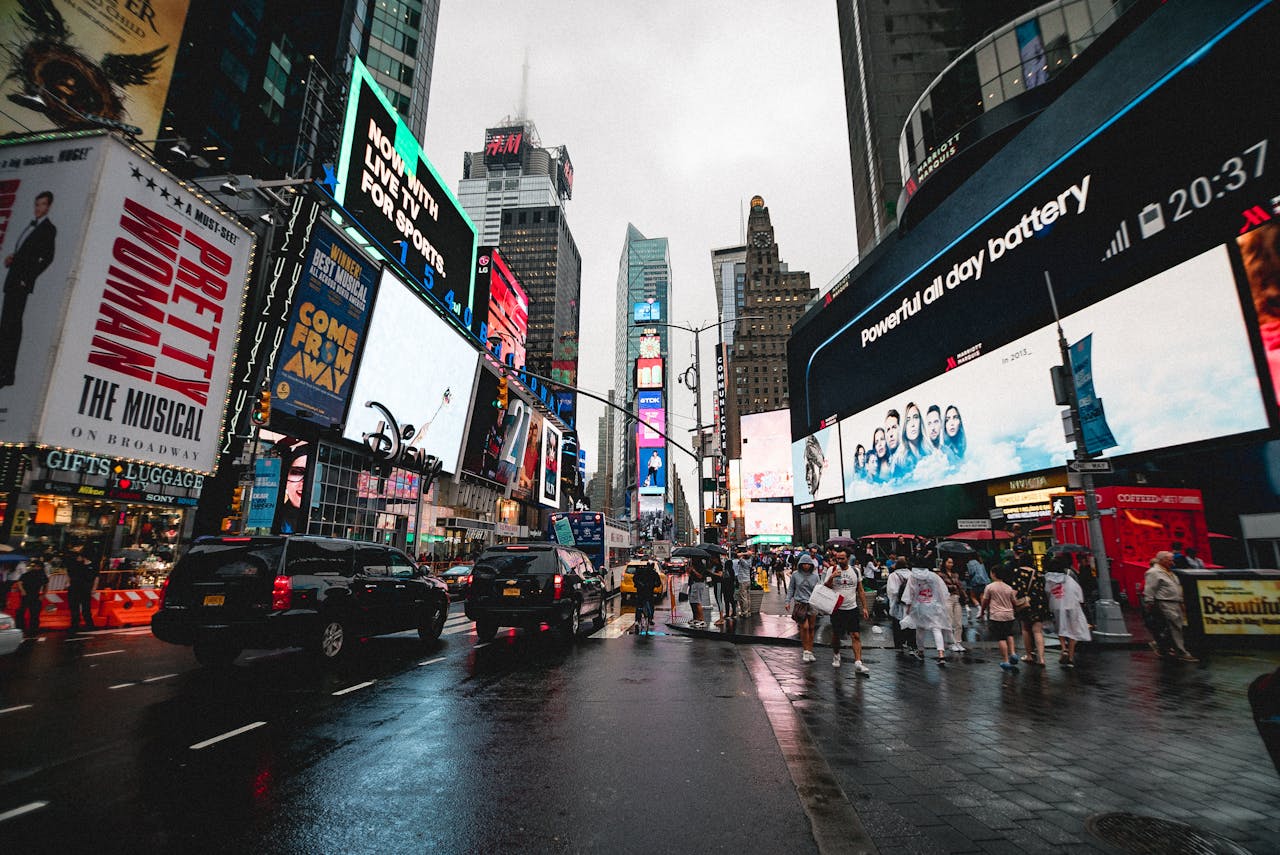We’ve all done it—glanced up at a billboard on our morning commute, caught a glimpse of a pizza dripping with cheese, and suddenly found ourselves ordering delivery by lunchtime. Or maybe we’ve passed a sign for a nearby exit and impulsively detoured to a roadside attraction, restaurant, or store we hadn’t planned to visit.
These seemingly minor moments are anything but accidental. Outdoor billboards are designed to spark quick decisions, and behind their bold graphics and catchy slogans lies a deep understanding of how our brains work. Welcome to the psychology of the passerby.
The Brain on the Move: Processing in Seconds
Most people encounter billboards while driving, walking, or commuting—activities that require focus, which means attention is already limited. On average, a person views a billboard for only 5 to 7 seconds. That’s not much time to make an impression, but the brain is incredibly fast.
In a fraction of a second, we can absorb colors, recognize faces, process familiar logos, and associate visuals with feelings. Outdoor advertisers leverage this rapid-fire processing with carefully curated messages that aim to bypass deep thought and go straight to instinct.
Think of a billboard like a visual elevator pitch. It doesn’t need to explain everything—it just needs to trigger a thought, a desire, or a decision.
The Power of Suggestion
One of the most effective psychological tactics in billboard advertising is priming. This involves subtly planting an idea or association in the viewer’s mind, making them more likely to act on it later.
For example, seeing an image of an ice-cold soda on a hot day doesn’t just make you aware of a product—it primes your brain to think about thirst, refreshment, and gratification. Later, when you pass a convenience store, you’re more likely to stop—not because you consciously remembered the billboard, but because it already shaped your mental state.
Priming works best when it taps into universal human needs: hunger, comfort, status, excitement, or curiosity. Billboards that speak to these instincts—often through imagery more than words—are the ones that drive results.
Emotional Hooks and Visual Cues
We’re emotional creatures, and emotions are a shortcut to decision-making. Outdoor advertising that evokes laughter, nostalgia, desire, or even surprise tends to stick. That’s why emotional storytelling, even in a single image or phrase, can be so powerful.
A smiling child holding an ice cream cone. A luxury car framed against a dramatic sunset. A witty one-liner that makes you chuckle on your drive home. These aren’t just creative flourishes—they’re psychological triggers.
Visual cues play a huge role, too. Bright colors, high contrast, and large fonts are easier to process quickly. Repetition (seeing the same brand or message multiple times) also boosts familiarity and trust—an effect known as the mere exposure effect.
Even the direction of a gaze in an image can influence where our eyes go. Studies have shown that people tend to follow the gaze of others in visual advertisements, so if someone in the ad is looking at a product or message, viewers likely will, too.
The Role of Relevance and Timing
Split-second decisions are often about convenience. That’s why billboards placed near exits or service areas are so influential. A well-timed ad for a coffee shop just before a highway turnoff can prompt a driver to stop when they wouldn’t have otherwise. That’s because the ad was relevant in the moment—and relevance breeds action.
Geo-targeted outdoor ads are increasingly smart in this way. Digital billboards can change based on time of day, weather, or traffic patterns. Rainy morning? The billboard might show warm soup or a cozy bookstore. Hot afternoon? Maybe it’s ice cream or a car wash. These subtle adjustments match the ad to the viewer’s current state, making the message feel more personal—and persuasive.
Simplicity = Memorability
The average human attention span may not be shrinking (contrary to popular belief), but it is more fragmented than ever. Outdoor advertising embraces this reality with a golden rule: Keep it simple.
Messages that are short, bold, and easy to digest are more likely to stick. Why? Because simplicity reduces cognitive load. Our brains are constantly filtering stimuli to focus on what matters. A clean, clear message cuts through the noise and allows for instant comprehension—a key ingredient in split-second decision-making.
This also explains the success of iconic slogans like “Just Do It” or “Got Milk?” Short, memorable phrases can nestle into the mind quickly, especially when paired with consistent imagery or branding.
Trust and Familiarity
Another psychological principle at play is brand familiarity. People are more likely to choose something they recognize over something they don’t—especially when they’re under time pressure or distracted.
That’s why outdoor advertising often works best as part of a broader strategy. When a consumer sees a brand on social media, hears it on the radio, and then spots it on a billboard, it creates a reinforcing loop. The next time they need that product or service, the name comes to mind first.
This “top-of-mind awareness” is critical in crowded markets where consumers have too many choices. Billboards serve as a physical, constant reminder that builds trust through repetition.
Subtle Influence, Lasting Impact
Outdoor advertising doesn’t always result in immediate action—and that’s okay. Sometimes its influence is more subtle. A billboard might plant a seed that blooms hours or even days later. A well-placed image or slogan may become the nudge that tips someone into choosing one brand over another when the moment comes.
In the world of behavioral psychology, this is known as nudging—small suggestions that influence behavior without overt persuasion. Billboards, by their very nature, are great at nudging. They don’t demand attention; they invite it.
Final Thoughts
In an age of fast scrolling, pop-up blockers, and digital fatigue, outdoor billboards remain a surprisingly human form of advertising. They speak to us in our world—in traffic, on foot, during commutes—when we’re in motion and making real-world choices.
By understanding the psychology of the passerby, advertisers can design messages that do more than grab attention—they can guide decisions, spark action, and leave lasting impressions in just a few seconds.
After all, when your audience is on the move, it’s not just about being seen—it’s about being remembered.


